TGS.ai : Energy Data Insights
through AI Applications
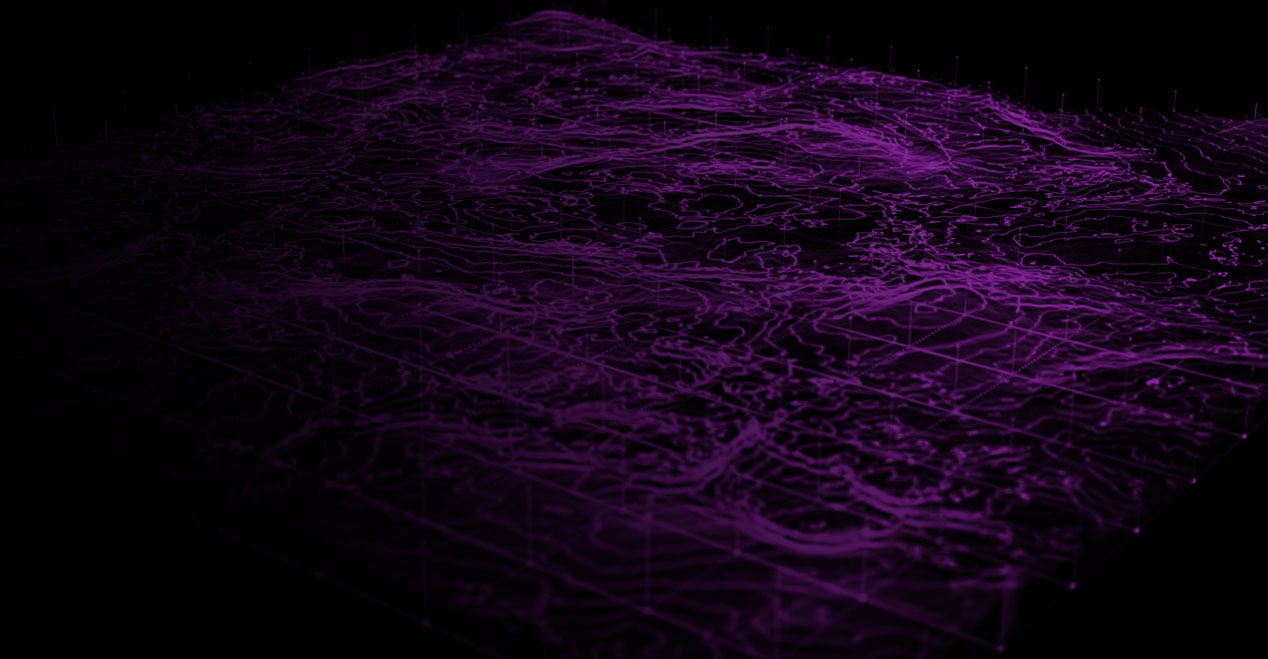

AI Geological Interpretation on a Large-Scale Densely sampled OBN Exploration Dataset
Artificial Intelligence-Derived Seismic Products for Unparalleled OBN Insight
TGS is now able to deliver an entirely new suite of derivative seismic products to provide enhanced exploration insights through Artificial Intelligence (AI), especially in areas where Infrastructure lead exploration (ILX) is drawing increased focus from the E&P industry. With human training, ground truth well data anchoring, and blind testing, the combination of high fidelity seismic with cutting-edge AI technology provides reassuringly accurate predictions.
Our ground-breaking project based on the TGS Utsira Ocean Bottom Node (OBN) dataset in the southwest of the Norwegian continental shelf is the first example of AI geological interpretation on a large-scale, densely sampled OBN exploration dataset covering over 1,500 square kilometers.
By applying cutting-edge Machine Learning (ML) to this large, full azimuth OBN seismic data volume in a relatively well-understood region of the NCS, TGS aims to provide clients with a unique, previously unseen insight into the prospectivity of this region. Derivative products will illuminate detailed structure, provide enhanced analysis and supply complex attributes at scales not hitherto achieved through OBN data.
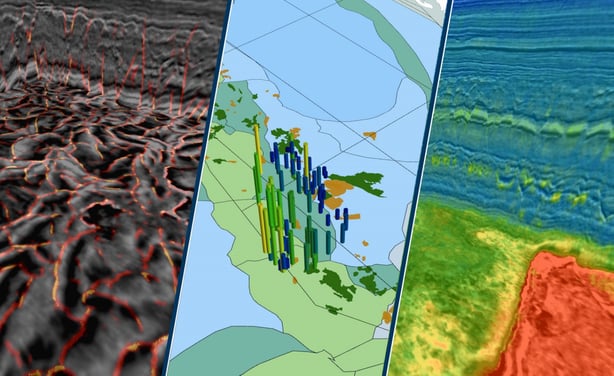
Example derivative seismic products from the Utsira OBN survey include (L-R) fault mapping, 1D well data, and 3D property prediction.
Properties, Curves and Geobodies
The Greater Utsira High area and adjacent basinal areas have a high density of wells. These served as the ultimate source of ground truth for rock and fluid properties. The EarthNET platform from Earth Science Analytics was used to predict missing well logs, rock- and fluid property curves from all the released well data in the Greater Utsira High. It leveraged Machine Learning (ML) methods and robust schemes for cross-validation and blind testing to gain trust in the resulting predictions.
The rock and fluid property curves that were produced then aligned and integrated with the angle stack data from the OBN survey and, based on this data, ML models were trained to quantify the relationships between the seismic data and the target properties of interest. As a result, 3D property volumes of lithology, porosity, density and Vp velocity were deduced. The Vp velocity was benchmarked against traditional inversion output and found to provide a more detailed picture of the subsurface.
Structural seismic interpretation was also performed on the OBN survey using Machine Learning methods, specifically to interpret faults and geobodies. In this case, the geobodies are injected sandstones, or "injectites". These bodies are commonly velocity and density anomalies, but they are also locally prospective in the Greater Utsira High area. The 3D mapping of the injected sandstones can thus be used to further improve data quality via seismic processing and to identify prospective rock volumes.
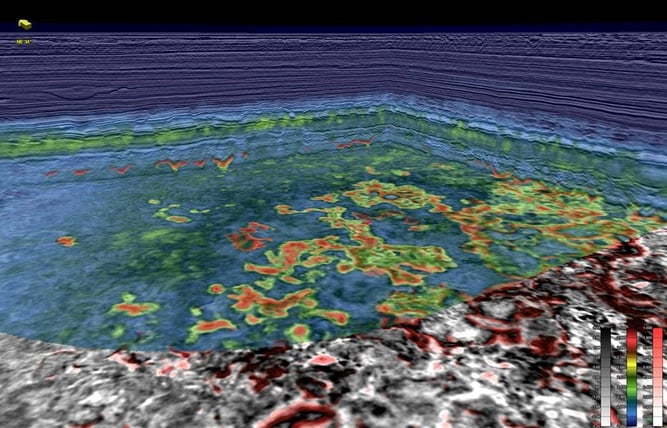 Utsira OBN inline, crossline and depth slice showing seismic overlain by TGS processed velocity model (2nd pass DMFWI using ultra-long offsets and reflections) and ESA-TGS modeled injectites (red).
Utsira OBN inline, crossline and depth slice showing seismic overlain by TGS processed velocity model (2nd pass DMFWI using ultra-long offsets and reflections) and ESA-TGS modeled injectites (red).
EarthNET is installed into TGS's cloud as a cloud-native application. This enables analysis directly on the data to transition the raw input to property logs and volumes. The properties produced from well data will include porosity, lithology and water saturation, as well as seismic interpretations of faults and geobodies including injectites.
The output from the well-based property prediction study, the 3D-property prediction models, and the automatic seismic interpretation provide invaluable new insights that can fuel further exploration of this mature area and produce further precious barrels from existing infrastructure.
These seismic derivative products for the Utsira OBN survey are available for purchase now. Later they will be accessible through a data room environment as a means for operators to maximize their potential findings and profits, minimize risk and support the best possible decision making.
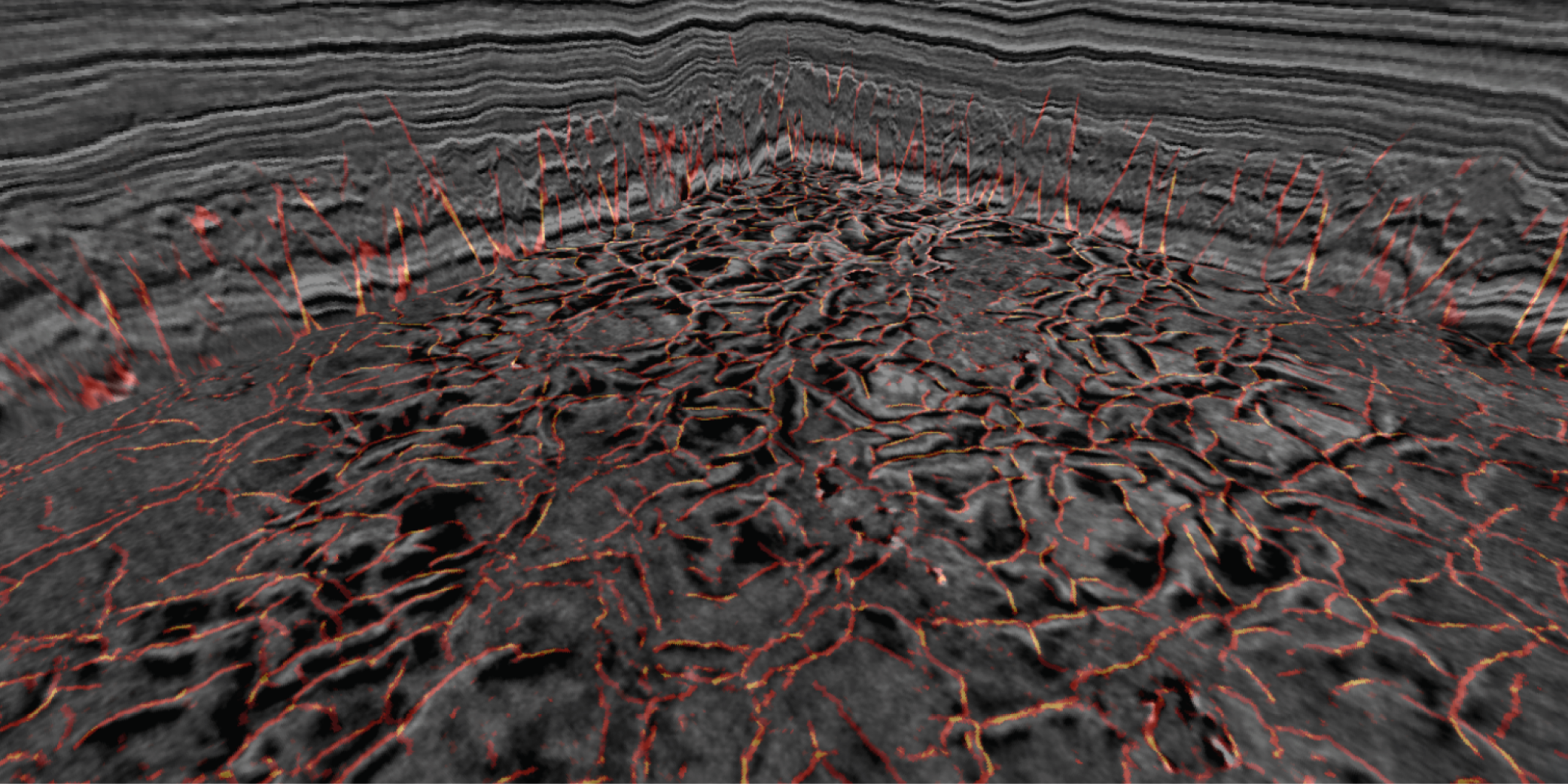 Fault prediction display
Fault prediction display
Further Insight Potential
The collaboration with Earth Science Analytics brings together two key players in the geoscience field. The Earth Science Analytics cloud-native EarthNET platform is now deployed in the TGS cloud environment hosted by Amazon Web Services (AWS), with strategic access to the world's largest library of subsurface and energy data. The result is a combination of cloud data access opportunities and viewing/analysis capabilities, all in one space, utilizing the best data and tools for successful outcomes in oil and gas exploration, development, and production.
TGS holds the world's most extensive subsurface data library, including seismic and well data sets. When run through Earth Science Analytics' EarthNet software, the leading software for working with large data sets and AI-assisted analysis, this data can be maximized to provide significant insights into subsurface potential.
This project is seen as the beginning of an exciting partnership that will continue to drive forward innovation, boost insights, and cement data-driven thinking in the sector.
About Earth Science Analytics
Earth Science Analytics AS (ESA) is a Norwegian technology company developing the next generation web-based cloud-native geoscience software and solutions. ESA incorporates extensive knowledge and experience in geoscience, computer science, artificial intelligence, and machine learning, to develop software and solutions for the energy industry. The software products provide geoscientists with opportunities to work with large data sets more efficiently and obtain more accurate results at a lower cost compared to what can be achieved with traditional methods.
Product Specifications
| Well AI | Missing Log Prediction |
| Well AI (porosity, lithology) | |
| Structure | Fault Interpretation |
| Geobody Extraction (injectites) | |
| Property Prediction | VP |
| Rho | |
| 4 Class Lithology | |
| Vs |
Additional Resources
-
AI and Ultralong Offsets Updating the Story of Utsira OBN - Hart Energy Article - August 2021
-
The Future is Limitless: A.I. and Machine Learning in Geoscience - TGS Insight Article - July 2021
-
Integrating Seismic Prestack and Well Data Augmented through Machine Learning - TGS Insight Article - June 2021
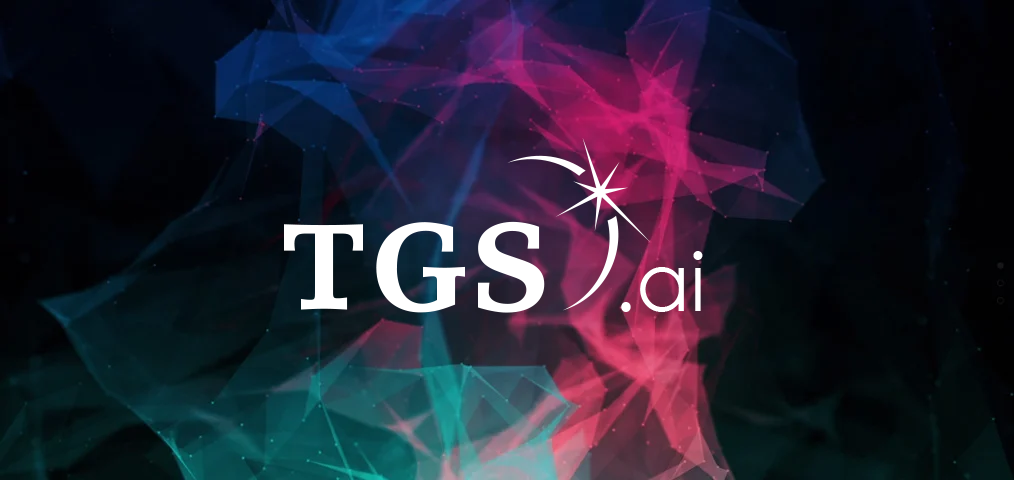
Useful Links
- DISCOVER more Articifcial Intelligence and MAchine learning inititives through our TGS.ai website.
- EXPLORE our extensive seismic data library across NW Europe.
- ACCESS more information on our seismic coverage in the region.
Contact us to learn more about the Utsira OBN project and Derivative Products